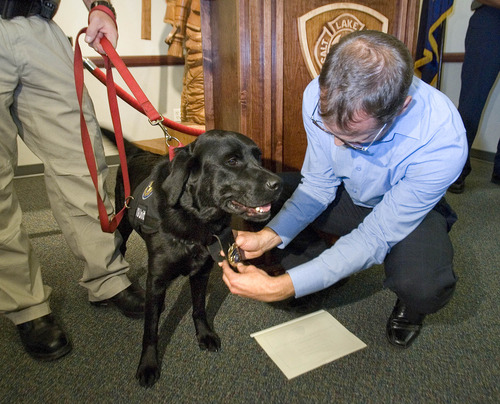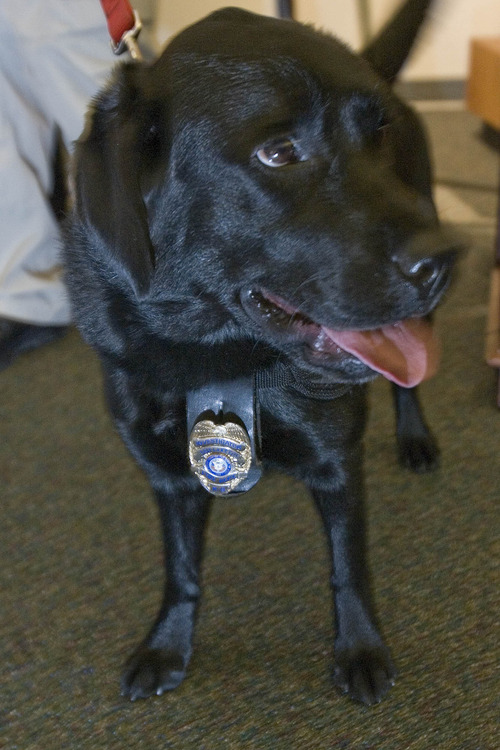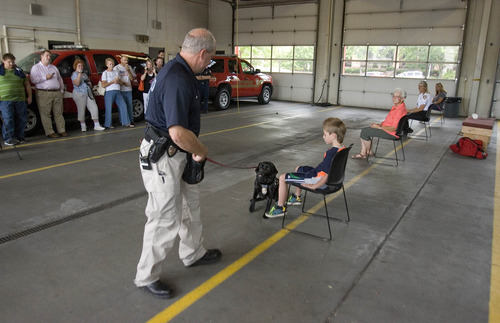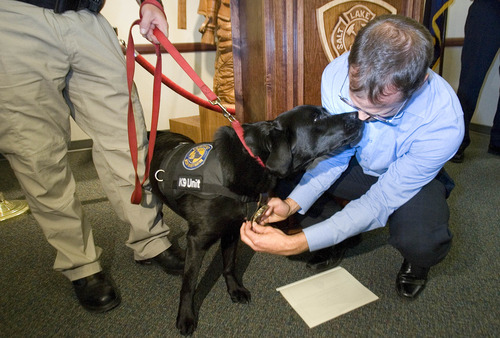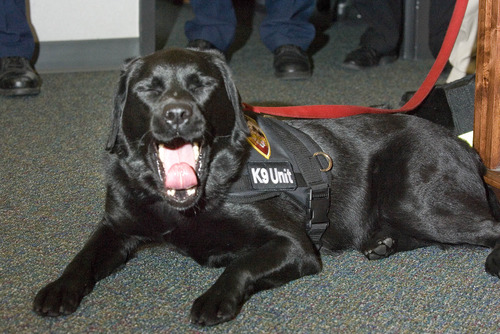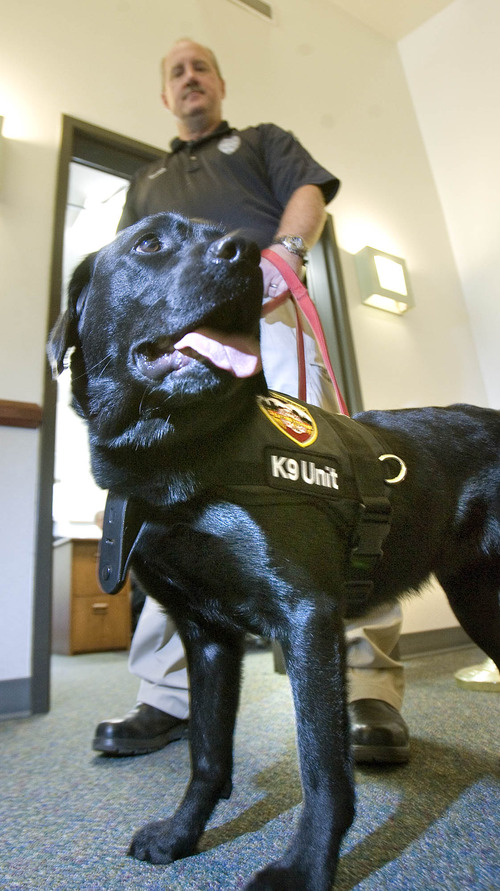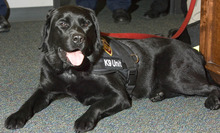This is an archived article that was published on sltrib.com in 2013, and information in the article may be outdated. It is provided only for personal research purposes and may not be reprinted.
When Russ Whitney gets up in the middle of the night to investigate a possible arson, Star still gets excited sometimes, thinking she's going with him.
But after 12 years of working with Whitney at the Salt Lake City Fire Department, the black Labrador retriever has retired to make way for the department's newest arson investigator: Daz, short for Dazzle. The 2-year-old black Lab was sworn in Wednesday as the newest member of the fire department in a ceremony at a downtown fire station, which also marked Star's retirement.
Like her predecessor, Daz is trained to sniff out accelerants amid the ash and rubble of a burned-out building. It takes Daz mere minutes to find evidence for arson.
"We have about 2 million olfactory cells in our nose that allows us to smell ... dogs have more than 550 billion," said Whitney, who cares for both dogs at his home. Any burning material gives off a distinct scent that humans, for the most part, cannot distinguish but dogs can, he added.
SLCFD acquired Star and Daz from the State Farm Insurance arson dog program, founded in 1993. The company pays to send fire investigators from around the country to Maine, where they spend five weeks training with prospective dogs picked for the job. After establishing a working relationship, the dog returns home with its new partner to help solve crimes.
Star began her career with Whitney on Sept. 11, 2001. Two days later, she helped him investigate a fire at Curry in a Hurry, a restaurant owned by a Pakistani family. James Herrick ultimately pleaded guilty to forcible interference with civil rights.
More recently, a blaze destroyed the old Intermountain Furniture Manufacturing Co. building on 600 West, across from the Utah Transit Authority's Intermodal Hub in Salt Lake City. Within 10 minutes, Star pointed out three spots for Whitney to look for evidence, all which later tested positive at the state crime lab for accelerants.
Now it is Daz's turn. She has been out on 12 fires since starting work a month ago.
As with her predecessor, Daz is reliable because she is trained to work to eat. Only when she detects an accelerant does Daz get fed. In the absence of a real fire, Whitney practices detection with the dog.
Daz, sporting a brand new badge around her collar, demonstrated her skills after the swearing-in ceremony. In a line-up of four people, one of whom had a drop of gasoline on his shoe, Daz successfully sat down and pointed her nose at the fuel. It was a combination of signalling movements that she uses only in detection.
Arsonists often stick around to watch their handiwork, said Jasen Asay, SLCFD spokesman. Besides sniffing out the scene, the dog will go through a watching crowd to check for potential arsonists.
Whitney emphasized that an arson dog is only an initial investigation tool. Samples still must be verified by chemists to prove arson.
The Unified Fire Authority and Utah state fire marshal also have arson dogs.
In 2009, more than 41,500 fires were intentionally set nationwide, causing more than $792 million in property damage and killing 170 people, according to the National Fire Protection Association.
"The scope of arson goes beyond impacting insurance companies — it affects the personal and financial well-being of us all," said State Farm Agent Phillip Brant. "Training dogs to detect accelerants at fire scenes saves time and money."
Twitter: @mikeypanda


